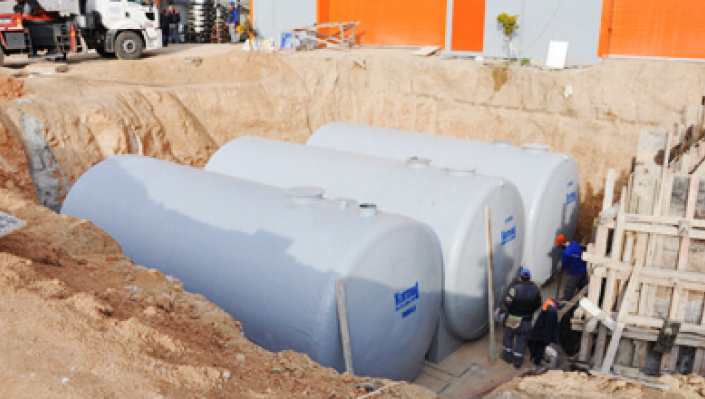Storage tanks are used in almost every place we see around us. Although we are more accustomed to seeing water tanks in industries, they are also widely used in homes and workplaces. In industries, they are sometimes used on production lines or for transportation purposes.
Each tank has its own raw material and design, and they have inherent advantages. An apartment building or a commercial establishment may need a water tank to save water or for emergency use. The purpose of tanks is to store chemical or food content, enable transportation if needed, and provide the means for discharge and use when necessary.

For water saving in a building, the best method is using a rainwater harvesting tank system. With this system, you can store water and after filtration, use it for drinking purposes. Unfiltered water, on the other hand, can be used for plant irrigation and cleaning.

Another usage is for emergency purposes, where tanks made of stainless steel are recommended. These tanks are more resistant to disasters like fires and can even function during earthquakes if something falls on them.
When there is a need for a tank in a building, tanks of various sizes can be produced. However, when a need for a tank arises, it is also important to know the general features of tanks. The general features of tanks are as follows:
What Are the General Features of Water Tanks?
Before production, R&D studies are conducted to discover the three most suitable raw materials for tank production: polyethylene, polyester, and stainless steel.
Each material has its own advantages and unique designs. However, there are common features for all storage products. For instance, all tanks do not allow harmful rays to penetrate inside. Additionally, each tank comes with a two-year warranty covering manufacturing defects. If a tank is damaged due to use, it can be repaired by taking it to the production facilities. All tanks are produced in compliance with environmental and health management systems and have certifications. They can be produced in any desired color, making it easy to categorize different contents with different colored tanks.
Polyethylene Water Tank
Polyethylene tanks are popular due to their suitability for food and economical prices. Their suitability for food is at an international level. Additionally, rainwater harvesting tanks are produced using this material. These tanks are monoblock, meaning they are produced as a single piece. This production method makes them the most economical option. Since no extra parts or riveting are used during production, they have a long-lasting and durable structure.
When focusing on technical specifications, the range of sizes varies from a minimum of 50 liters to a maximum of 25,000 liters. The working temperature range is up to +50 degrees Celsius. They have the most diverse designs among tanks.
Polyester Water Tank
Polyester tanks are known for their chemical resistance. The production process involves joining the main material obtained from polyester resin and fiberglass using special adhesives. This provides the tanks with the advantage of on-site assembly. The working temperature range is up to +60 degrees Celsius. High chemical resistance is achieved through isophthalic and epoxy-based vinylester resin. They are the most suitable tanks for transportation. Tanks with large tonnage are produced using this raw material. The range of sizes varies from 200 liters to 100,000 liters.
Stainless Steel Water Tank
Stainless steel tanks stand out with their durability. Stainless steel has both a rigid structure and, as the name suggests, does not rust or corrode. It is essentially made by mixing chromium and nickel. The main material obtained with this raw material is joined using argon welding. This provides the tanks with the advantage of on-site assembly.
These tanks are highly insulating due to their raw material, and they have the highest working temperature range among tanks, reaching +80 degrees Celsius. As this temperature is close to the boiling point, it is necessary not to touch the tank after storing hot content. Production can be carried out in very large tonnages. To provide access to the lid part of large-volume tanks, ladder support has been added to the tanks. Lastly, stainless steel tanks generally have feet.
Thus, we have outlined the reasons why a building would need a water tank. If you need a tank for your building or workplace, you can contact our customer representatives to get a quote.


 EN
EN
 DE
DE
 FR
FR
 IT
IT
 ES
ES
 PT
PT
 RU
RU
 AR
AR
 BG
BG
 SR
SR
 GR
GR
 SQ
SQ
 RO
RO
 PL
PL
 HU
HU
 CZ
CZ
 HR
HR
 AZ
AZ
 GE
GE
 AM
AM
 IL
IL